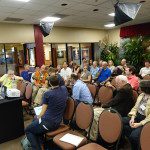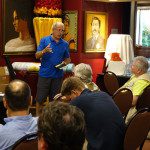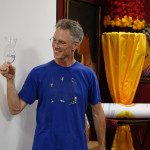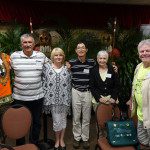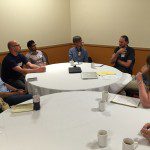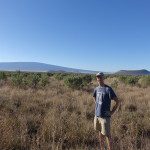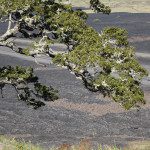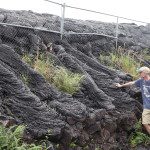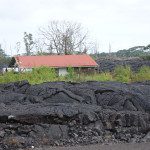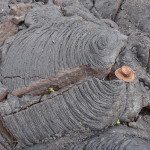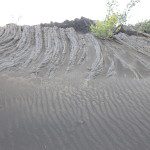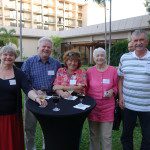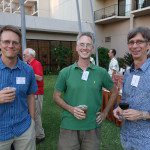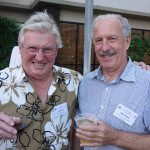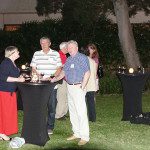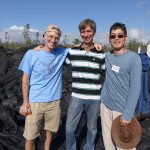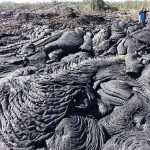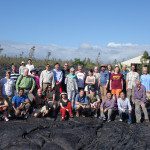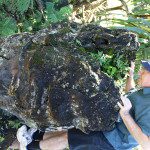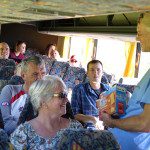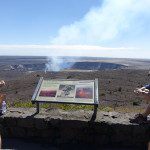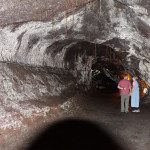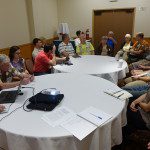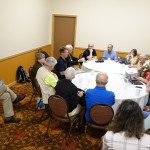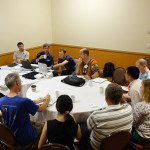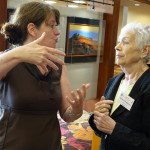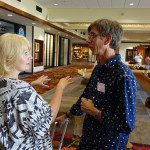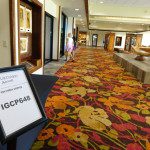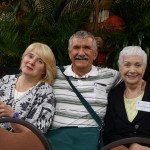Hawaii field symposium, Kailua-Kona, 9-13 December 2015
The first field symposium of Project 648 was successfully (and also enjoyably) held on the Big Island of Hawaii, one of the world’s most active volcanoes, near the center of the Pacific Plate and atop one of the two large low shearwave-velocity provinces (LLSVPs, or superplumes) in the Earth’s mantle. The meeting’s primary goals were (1) to set scientific priorities and goals for Project 648, (2) to introduce participants to each other, and (3) to establish a plan for participants to take leadership roles in realizing the project objectives. In addition to the successful two-day meeting, there was a one-day field excursion to examine the recent and active volcanoes of the Big Island. The symposium was convened by Project Co-Leader Professor David Evans, with administrative support mostly provided by Dr Weihua Yao.
The symposium started with an introduction of the project by Co-Leader Professor Zheng-Xiang Li, followed by brief presentations of almost all attending members describing each member/group’s scientific interests/results in relation to the project. The main part of the workshop was designed around discussions within and between four breakout groups: (1) database/software development (chaired by Co-leader Professor Bruce Eglington), (2) geodynamics (chaired by Associate Professor Clint Conrad), (3) tectonic reconstructions (chaired by Professor Ian Dalziel), and (4) paleoenvironment (A/Professor Nick Swanson-Hysell). In the first breakout sessions each group discussed its individual state of current affairs and goals for the next five years, which was followed by a summary of these deliberations to the entire assembly.
In the next three breakout sessions each group met with everyone of the other three groups, to discuss common interests and goals, and the means to achieve those goals over the next five years. Finally, each group made a summary presentation on the outcomes of the three inter-group discussion sessions. Major scientific questions to be addressed were discussed and agreed on, and suggestions/plans made regarding how best to achieve the project goals and address the scientific questions.
Splitting into working groups and cross-group meetings led to a better understanding of the peculiarities of the multi-disciplinary approach for the aims of our project. Each working group elaborated a plan for fulfilling the goals and ways for cross-communication with other groups.
The one-day field excursion was equally stimulating and exciting for members. Members examined some of the world’s best volcanic structures, including one lava flow that was only one-year old, a complex active volcano system, impact of the volcanic activities on the local communities and the society in general, and how the local communities developed their economy and culture in harmony with nature. Members also gained first-hand knowledge regarding the scale and characteristics of plume-induced volcanism which is commonly believed to have been driven by the Pacific Large Low Seismic Velocity Province (LLSVP, or superplume by some) in the lower mantle. One of the major research themes by members is how the supercontinent cycles interacted with the LLSVPs in the lower mantle.
Outcome of meeting
- Identified key scientific questions and interdisciplinary approaches necessary for achieving the project goals;
- established the project structure, including setting up a number of theme working groups, and reached a common understanding of how best to coordinate the global effort to fill the required database entries;
- agreed on key attributes needed for the global geotectonic database for both reconstructing paleogeography (supercontinent cycles in particular), ore genesis and fossil fuel studies, paleoclimatic analysis and modeling, and geodynamic modeling;
- established new links between researchers from the diverse fields of supercontinent studies (including paleomagnetism), geodynamics, potential field geophysics, mineral deposits, paleoclimate, and information management/data mining — all necessary for achieving the project goals;
- established new links between researchers from developed countries and those from under-developed countries, and between well established researchers and junior researchers (Post-Doctoral fellows and research students);
- agreed on work plan for 2016, and identified potential locations for future field symposia.



